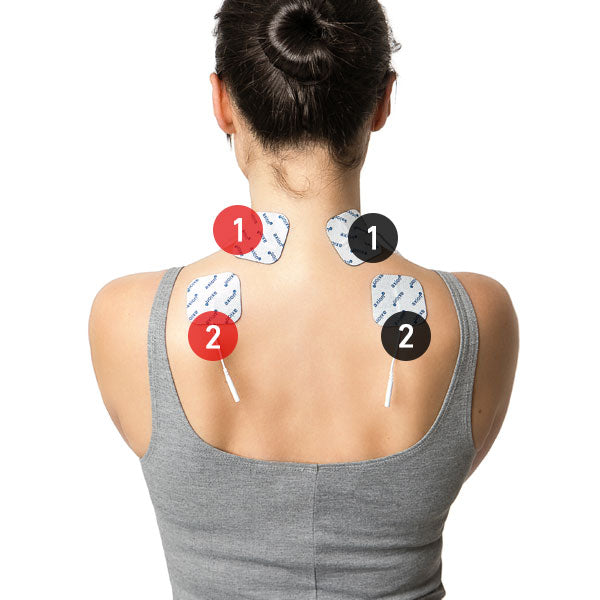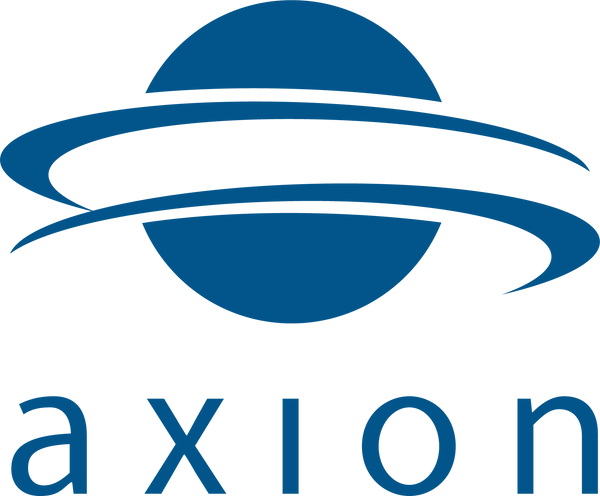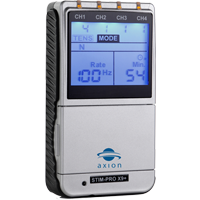TENS application for headaches

A TENS device can relieve the symptoms of different types of headaches. Regardless of whether it is a headache caused by tension in the cervical spine and shoulders[1] or other headache disorders. The stimulation current ensures a targeted massage and an increase in blood circulation in tense muscles.
In the case of primary headaches, pain-inhibiting messenger substances, the so-called endorphins[2], can be released through a specifically adjusted TENS application. In addition, the electrical impulses prevent the nerves from transmitting the pain signal to the brain. In these two ways, pain is relieved without the use of painkillers and medication. The TENS treatment also promotes blood circulation[3].

-

This guide is for orientation purposes and does not replace the supervision of a doctor or therapist. Please follow the warnings and safety instructions of your device. Changes and errors are possible.
-

Number inside the circle: Channel number
Circle color: Red = Electrode 1, Black = Electrode 2
The recommended programs for axion TENS devices
*The STIM-PRO Eco is a manual TENS device. If you have not received parameter settings from your therapist, please use a frequency range between 70 and 120 Hz (burst mode 2 Hz) and a pulse width range between 150 µs and 200 µs.
Please note when using TENS:
The intensity should be adjusted so that it is felt as a pleasant tingling sensation. The duration of the application should be approx. 40 minutes in order to be able to achieve a lasting reduction in pain. It also makes sense to switch programs every now and then.
What causes headaches?
The advantages of pain treatment with TENS
-

From everywhere
You can use TENS therapy anywhere. It doesn't matter whether you're sitting comfortably on the sofa or in the office.
-

Drug free
TENS pain therapy is an alternative to drug pain treatment
-

At any time
You can use TENS flexibly and at any time. Success can already be achieved after the first treatment
-

Free of side effects
When used correctly, pain treatment with TENS has practically no side effects
Studies and scientific sources








